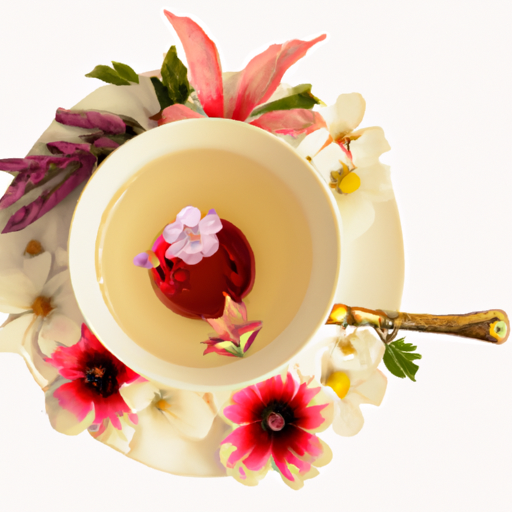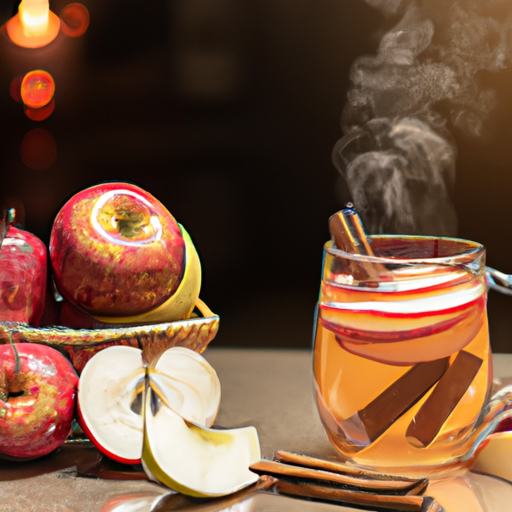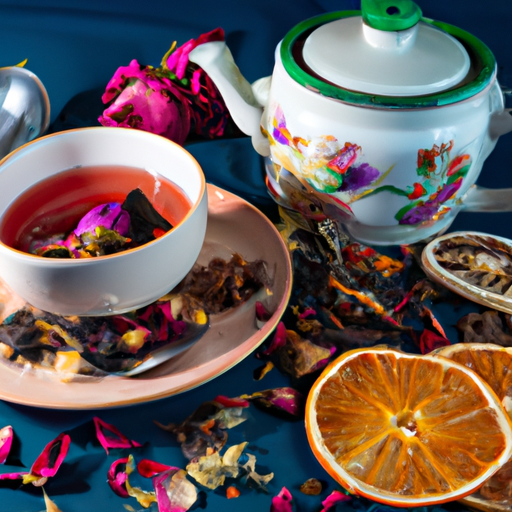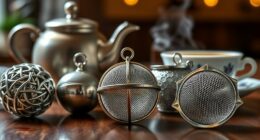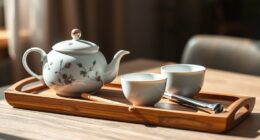Step into a world of fragrant bliss and explore the enchanting realm of floral teas. As I embark on this journey of discovery, I am captivated by the intoxicating aromas and exquisite flavors that await me.
These delicate petals, carefully cultivated and crafted into teas, offer a sensory experience unlike any other. From the soothing chamomile to the tangy hibiscus, each floral infusion has its own unique qualities and benefits.
Whether you seek relaxation, relief from cold symptoms, or simply a moment of tranquility, floral teas hold the key. Join me as I delve into the types, benefits, and brewing techniques of these floral wonders.
Let us unlock the secrets of lavender’s essential oil, chamomile’s calming properties, and the visual delight of blooming teas. Together, we will embark on a delightful journey through the world of floral teas, one sip at a time.
Key Takeaways
- Floral teas offer a wide variety of options, including lavender, chamomile, linden flower, rose, hibiscus, osmanthus, jasmine, and chrysanthemum.
- Each floral infusion has its own unique qualities and benefits, such as lavender’s calming properties and chamomile’s ability to promote relaxation.
- Floral teas provide multiple health benefits, including relaxation, stress relief, digestive aid, immune support, and antioxidant-rich properties.
- When tasting floral teas, it is important to engage all senses to fully appreciate their delightful qualities, including observing color and aroma, inhaling delicate floral scents, and noticing subtle nuances and complexities in flavor.
Types of Floral Teas
I absolutely love exploring the different types of floral teas available. Some examples include lavender, chamomile, linden flower, rose, hibiscus, osmanthus, jasmine, and chrysanthemum teas.
Floral teas come in a variety of flavors, each with its own unique taste and aroma. Lavender tea is known for its calming properties, while chamomile tea is soothing and promotes relaxation. Linden flower tea is great for treating cold symptoms and helping with relaxation.
Rose tea is not only beautiful but also flavorful, and hibiscus tea has a tangy taste that can be enjoyed hot or cold. Osmanthus tea has a delightful peach-like flavor and is often added to other teas or used in desserts. Jasmine tea is popular for its scenting capabilities and can aid in relaxation and anxiety.
Lastly, chrysanthemum tea is light and sweet, commonly used for lowering fever and promoting relaxation. These floral teas not only offer a delightful experience but also have various health benefits.
Benefits and Uses
One of the reasons people are drawn to floral teas is because of their numerous health benefits and versatile uses. Floral teas offer a wide range of benefits for our well-being. Here are some of the health benefits of floral teas:
-
Relaxation and stress relief: Floral teas like chamomile and lavender are known for their calming properties, helping to reduce stress and promote relaxation.
-
Digestive aid: Certain flowers, such as hibiscus and chamomile, can soothe the digestive system, alleviate bloating, and aid in digestion.
-
Immune support: Linden flower tea is often used to relieve cold symptoms, boost the immune system, and promote quicker recovery.
-
Antioxidant-rich: Many flower infusions, like rose and jasmine tea, are packed with antioxidants that help fight against free radicals and support overall health.
Aside from their health benefits, floral teas also have versatile culinary uses. They can be used to infuse baked goods, create delicious syrups, and add unique flavors to desserts and cocktails. Floral teas truly offer a delightful and beneficial experience for both our taste buds and our well-being.
Brewing and Enjoying
To brew and enjoy floral teas, start by selecting your preferred flower tea and a suitable brewing method. Floral teas can be brewed using teapots or infuser balls, depending on personal preference. Teapots allow for a larger quantity of tea to be brewed at once, while infuser balls are perfect for single servings. When using teapots, make sure to choose one made of glass to fully appreciate the beauty of the flowers blooming. For infuser balls, select one with a fine mesh to prevent any loose flower petals from escaping.
Once you have chosen your brewing method, it’s time to savor the flavors of floral infusions. The art of tea tasting involves using all your senses to fully enjoy the experience. Start by observing the color and aroma of the tea. Take a moment to inhale the delicate floral scent. Then, take small sips and allow the flavors to coat your palate. Notice the subtle nuances and complexities of the floral notes. Take your time and let the tea linger on your taste buds. By engaging all your senses, you can truly appreciate the delightful world of floral teas.
Frequently Asked Questions
Are there any potential side effects or allergies associated with drinking floral teas?
Drinking floral teas can have potential side effects and allergies. Research on their medicinal properties is limited. It’s important to be cautious and consult a professional before consuming them, especially if you have serious medical conditions.
Can floral teas be combined with other herbs or ingredients to enhance their flavor or benefits?
Combining floral teas with other ingredients can create unique flavors. Additionally, floral tea blends can offer a variety of health benefits, such as relaxation, soothing properties, and immune support.
Are there any specific storage instructions for floral teas to maintain their freshness and flavor?
Storage tips for floral teas: To maintain freshness and flavor, store in airtight containers away from light, heat, and moisture. Check the shelf life of each tea, as it can vary.
Are there any cultural or historical significances associated with the consumption of floral teas?
Cultural practices and historical traditions have shaped the consumption of floral teas. From ancient rituals to modern customs, these teas have been celebrated for their beauty, flavor, and therapeutic properties, connecting us to our past and enriching our present.
Can floral teas be used in cooking or baking, and if so, what are some popular recipes that incorporate these teas?
Floral teas can indeed be used in cooking and baking. Some popular recipes include lavender-infused shortbread cookies, chamomile-infused cakes, and rose tea-infused macarons. Get creative and experiment with these delightful flavors in your culinary creations.
Conclusion
In conclusion, exploring the world of floral teas has been a truly enchanting experience. Each flower infusion offers its own unique benefits and flavors. From the soothing properties of chamomile to the tangy taste of hibiscus, floral teas are a delightful addition to any tea lover’s repertoire. Whether you choose to enjoy them on their own or use them to enhance other teas, why not embark on this aromatic journey and let the blossoms dance on your taste buds? After all, life’s like a cup of tea, it’s all in how you brew it.

